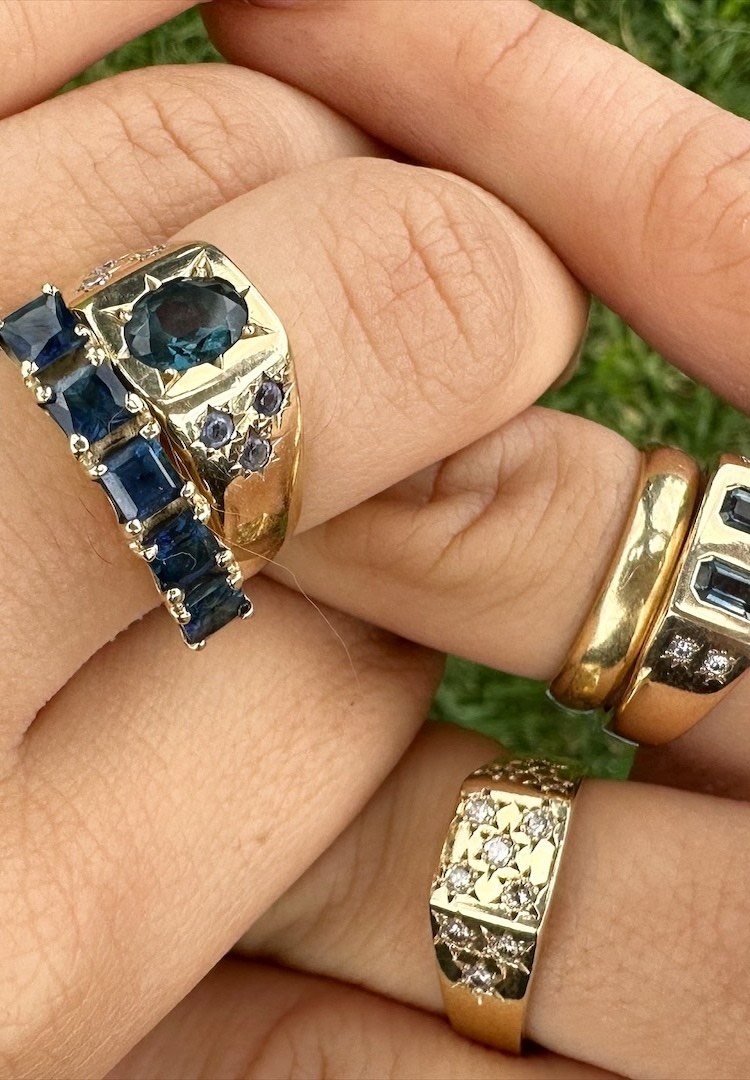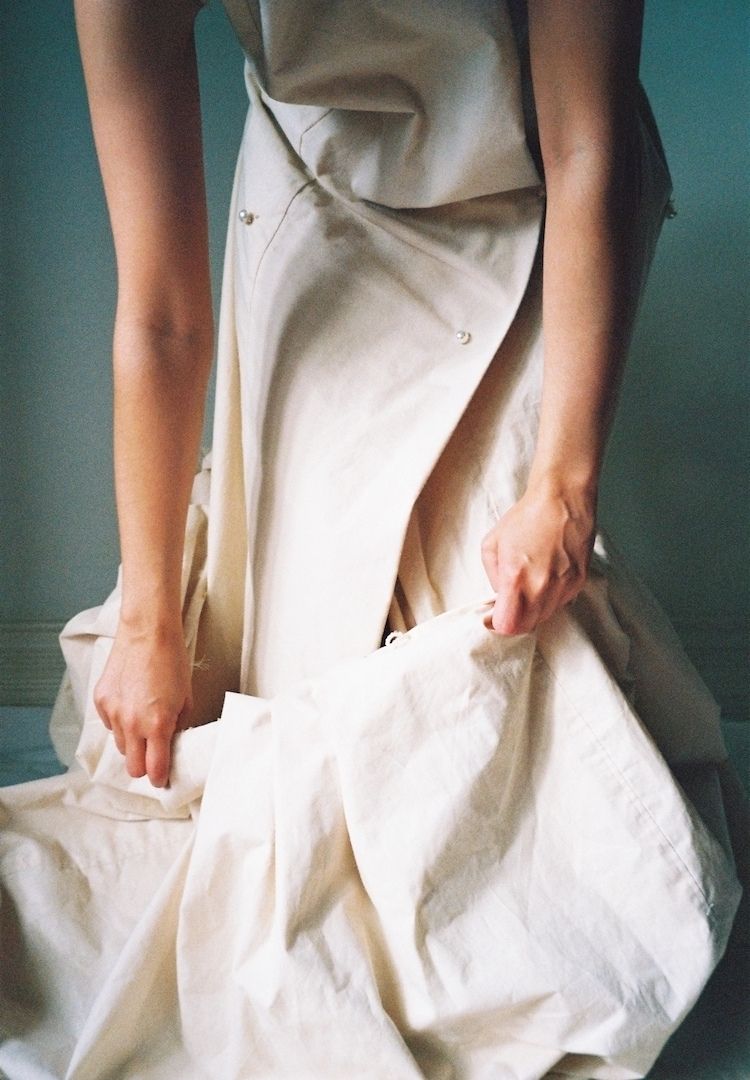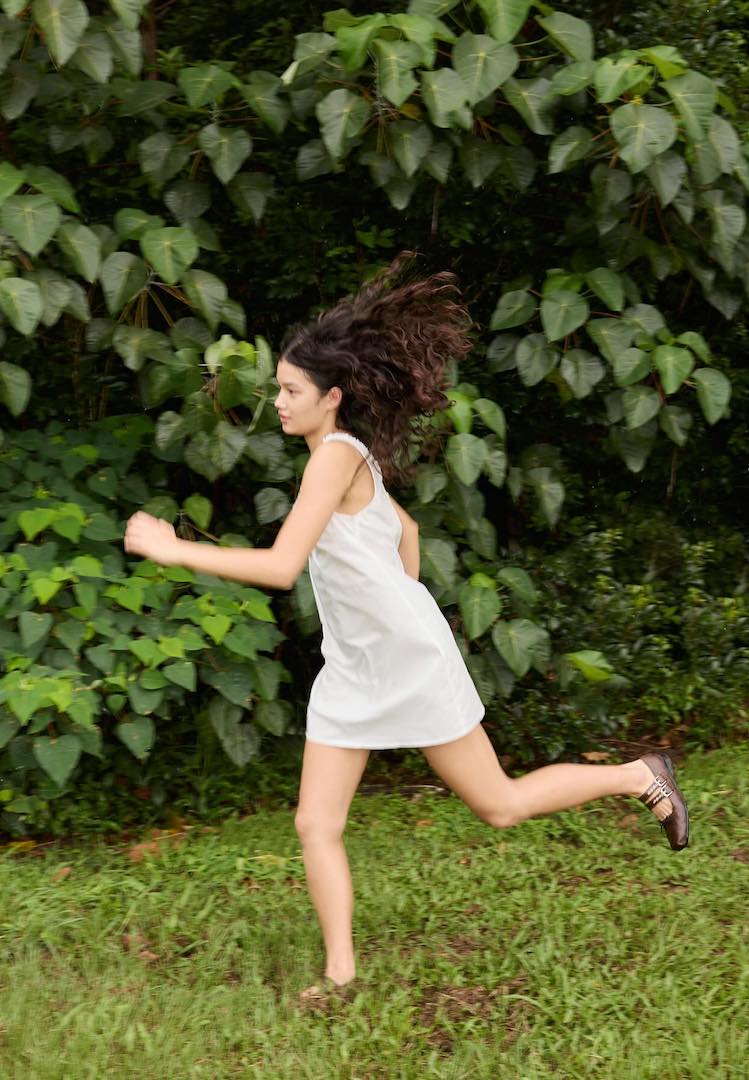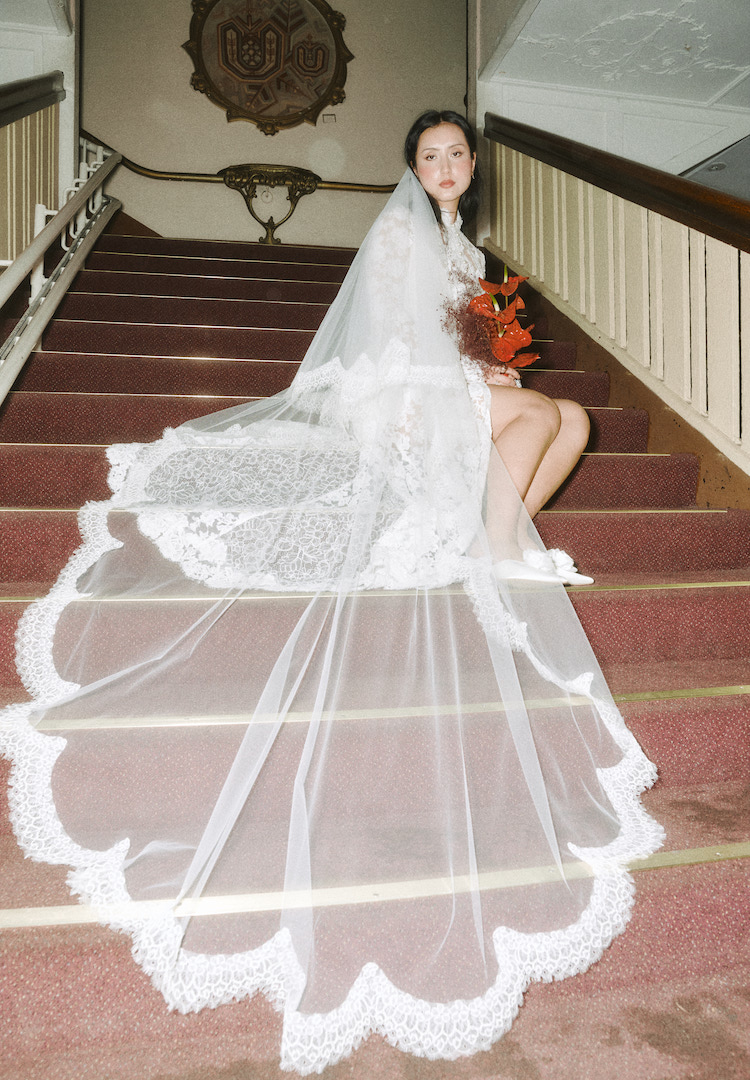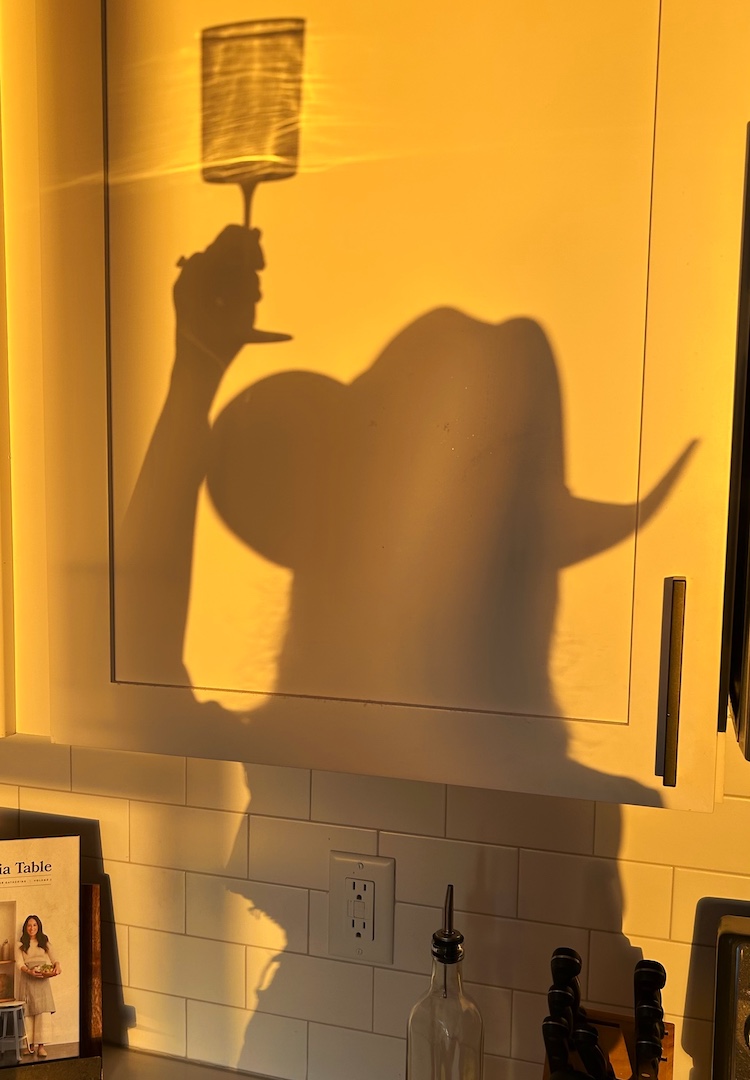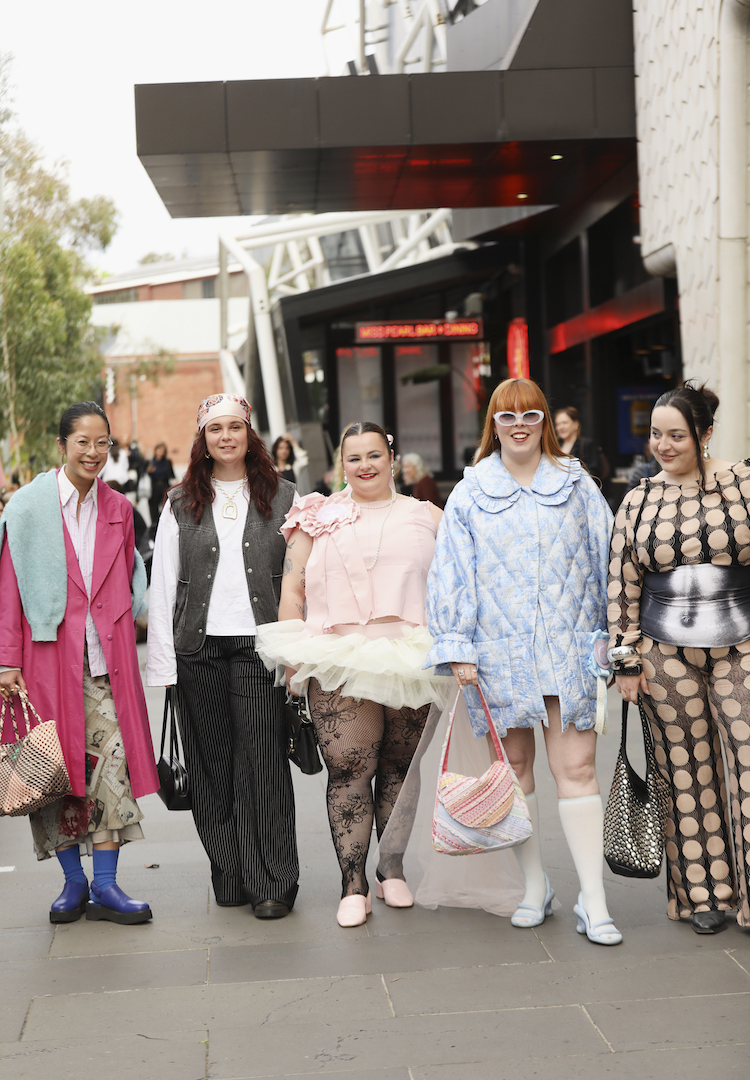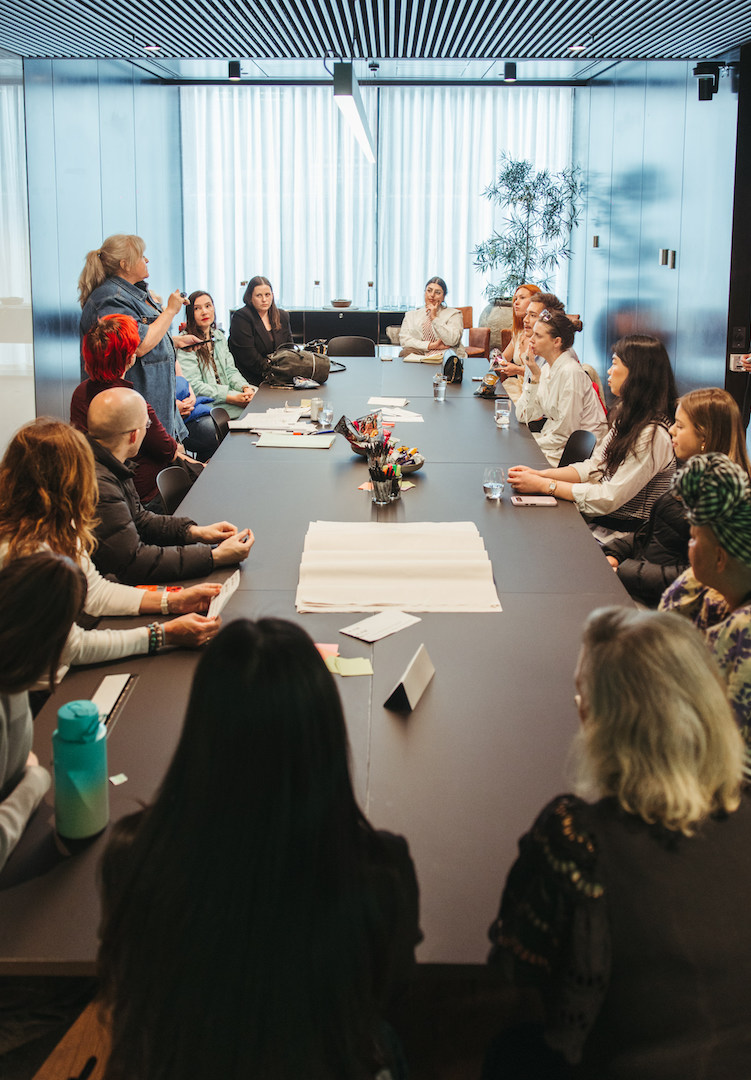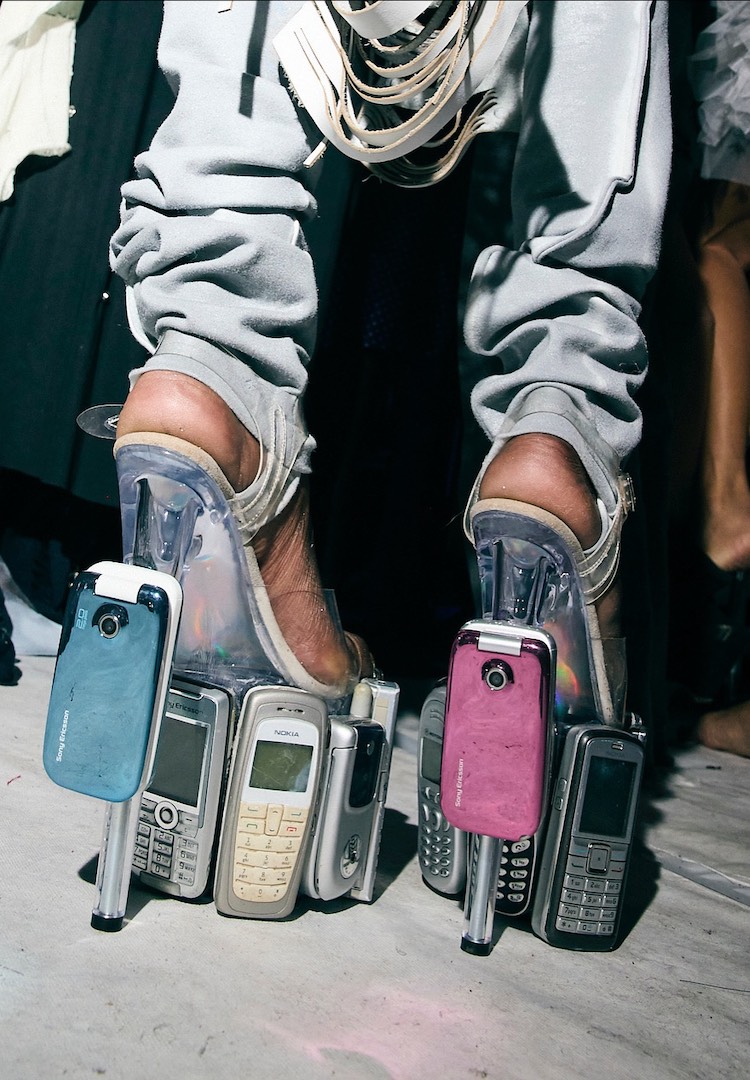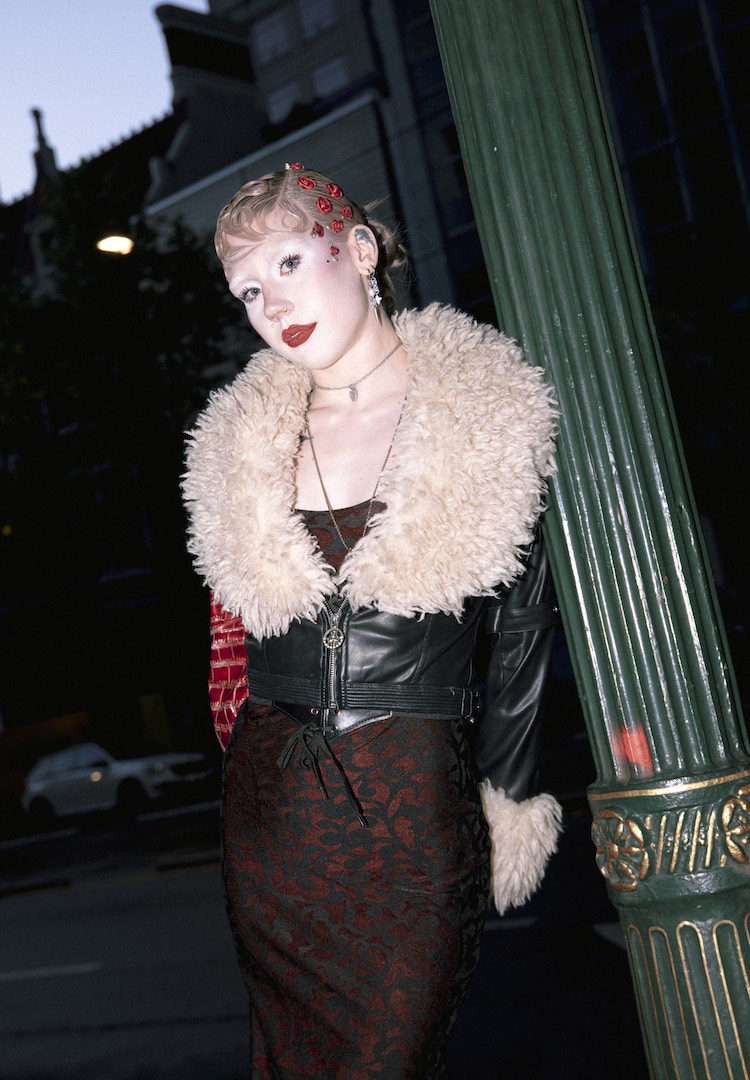Melbourne-based student designer Anjali Tulpule sees a circular future for bridal wear
IMAGE VIA @ANJALITULPULE.STUDIOS/INSTAGRAM
WORDS BY LARA DALY
“My collection is inspired by my mother’s wedding sari, which embodies circular fashion in a way that Western bridal gowns often do not.”
When RMIT fashion design student Anjali Tulpule was planning what to create for her graduate collection, she drew from her lived experience and heritage. After working behind the scenes at sustainable fashion brand Arnsdorf and in bridal production, she noticed a gap in the market for bridal wear that could be worn beyond the wedding day.
She considered the way her mother would often re-style and re-wear her wedding sari, and found her springboard. “The sari is a garment that evolves with a woman’s life – it’s not something that’s worn once and discarded,” she says.
For more fashion news, shoots, articles and features, head to our Fashion section.
Anjali’s collection, titled Caveat Venditor, is one of many exciting student works that you can see on the runway next month, as part of Melbourne Fashion Week. Always a major highlight, the show provides a glimpse into the future of Melbourne’s fashion scene, with collections by students from Box Hill Institute, Holmesglen Institute, LCI Melbourne, RMIT School of Fashion and Textiles and Whitehouse Institute of Design Australia.
With local veteran stylist Stuart Walford mentoring the students and styling the collections, it’s a massive opportunity for the next generation of designers to showcase their talent – and this year’s line-up is looking strong. Fashion Journal is once again an official media partner of Melbourne Fashion Week, so you can expect to see us at the show taking notes.
Tell me a bit about how you got started in fashion. Did you always want to be a designer?
I’ve always had a love for making clothes – my mum introduced me to sewing when I was very young. It wasn’t until I studied product design for VCE that I realised fashion design could be my future. I started RMIT’s Bachelor of Fashion Design in 2020 during the pandemic. Nearly two years of studying in lockdown gave me a new perspective on how to meet design challenges with the resources I had at home.
I also had the chance to work with sustainable fashion brand [Arnsdorf] and in bridal production. The contrast between the two industries was striking, especially [seeing] how fast-paced and wasteful the bridal industry can be. This ignited my passion to develop a sustainable bridal wear collection.
View this post on Instagram
Tell me about the collection you’re showing at M/FW. What was your inspiration?
My collection, Caveat Venditor, is inspired by my mother’s wedding sari, which embodies circular fashion in a way that Western bridal gowns often do not. The sari is a garment that evolves with a woman’s life – it’s not something that’s worn once and discarded. That philosophy drives my designs, which offer an alternative to traditional wedding dresses by creating pieces that can transform and adapt over time. In comparison to my earlier work, this collection goes deeper into the theme of sustainability.
What has the process been like, has there been many challenges?
There are six looks in the collection, each with transformative elements that allow the garments to be worn in different ways, post-wedding. The design and making process was both exciting and challenging. One of the challenges was balancing the need for the gowns to be beautiful, intricate and special for a wedding day, but also practical and reusable. Also, I used around 10,000 metres of thread in embroidery for the collection – me and my sewing machine were exhausted by the end of that process!
How would you describe your collection to someone who’s never seen it before?
Caveat Venditor is a sustainable, transformative take on bridal wear. It draws from the traditional Indian sari, known for its adaptability and longevity, and aims to reinvent Western bridal gowns in the same spirit. Each piece in the collection is designed to be worn beyond the wedding day. Through design techniques like adjustable pleats and innovative fastenings, the dresses can evolve into different garments like skirts, jackets or even bags, creating a circular fashion experience.
View this post on Instagram
What are you most proud of in your work so far?
I’m most proud of the collection I’m working on now. Every time I design and develop something new, I’m learning new skills and techniques to help me grow as a designer. I’m proud of how far I’ve come and the fact that I’m continuing to build on my practice, especially when it comes to integrating sustainability into my designs.
What do you wish you knew when you started on your collection?
I wish I had a better understanding of how time intensive it would be to both make and design pieces that are adjustable and versatile, and create a new embroidered textile. The embroidery was incredibly time consuming, including the hours spent sourcing embroidery materials. Also, I didn’t fully grasp how much trial and error would go into perfecting the pleating and fastenings to ensure they would function smoothly for different body types and styles. It’s been a rewarding process but it has taken more time than I initially anticipated.
View this post on Instagram
Who is exciting you the most in local fashion right now?
I’m really excited about the way the Australian fashion industry is bringing attention to sustainability and circular fashion practices. Digital creators like Slow Fashion Milly are helping to spread awareness. I also just finished reading Wear Next: Fashioning the Future by Clare Press which was really insightful. It gives me hope that there’s a future where Australian fashion can truly embrace sustainable, circular business models.
What about the local fashion industry needs to change?
I believe that the local fashion industry needs to take sustainability and circular fashion more to heart. There needs to be a shift towards designing garments that can be worn and re-worn without an expiration date. Also, I would love to see more brands adopting transparent supply chains and focusing on how they can reduce waste.
Who are your dream collaborators?
Dream collaborations would be with designers such as Stella McCartney and Supriya Lele whose designs and approaches I really admire. I’m also inspired by small-scale artisans and textile designers who create unique, sustainable materials. Partnering with them to create bespoke, eco-friendly fabrics would be amazing.
View this post on Instagram
Where do you hope to be in the next five years?
Over the next five years, I hope to have had many rewarding experiences learning about and working in the fashion industry. I honestly don’t know how my practice will evolve but I’m sure it will be focussed on adaptability and circular fashion.
How can we see more of your work?
To see more of my work and design development, you can follow me on Instagram at @anjalitulpule.studios. I’m also in the process of launching my website, where you’ll soon be able to view the full Caveat Venditor collection and make purchases directly. So definitely keep an eye out!
Get your tickets to the M/FW Student Collections Runway here.

